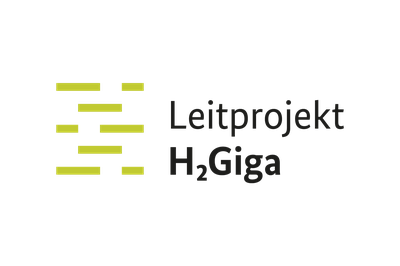
Contact

Dr. Eva Jodat
Acting Department Head Functional Materials and Components
Building 09.6 / Room 1.06
+49 2461/61-9782
E-Mail
Dr. André Karl
Acting Department Head Functional Materials and Components
Building 10.3 / Room 416
+49 2461/61-8842
E-MailDERIEL
DE-RIsking PEM electrolyzer. Research into degradation, failure and interface mechanisms at all technical and economic levels.
Subproject: Module and cell tests, analytics and modeling of degradation behavior
The aim of the National Hydrogen Strategy is to build up an electrolysis capacity of 5 gigawatts by 2030 in Germany alone for the production of green hydrogen. To achieve these goals, efficient, durable, robust, affordable and scalable electrolysers are required.
The transfer of water electrolysis technologies and their establishment in the industrial environment is the second central element, in addition to cost reduction through the introduction of series production for these plants, of the prerequisites mentioned in the program for creating the basis for the economical, robust and sustainable production of green hydrogen.
Objective
One of the prerequisites for the sustainable establishment of PEM electrolysers in energy production is a fundamental understanding of the degradation, error and interface mechanisms at all technical and economic levels.
In line with the national hydrogen strategy and the H2Giga flagship project, the DERIEL project aims to achieve a rapid market ramp-up of PEM electrolysers.
The DERIEL project aims to investigate the operating and degradation behavior of PEM electrolysers in an industrial environment. By developing strategies for process control, the aim is also to optimize performance while minimizing degradation phenomena. This will contribute to de-risking and the transfer of this technology to the industrial environment.
The task of IET-1 in this joint project is to investigate the operating and degradation behaviour of PEM electrolysers, to develop strategies for process control to optimize performance and minimize degradation effects, and in this way to contribute to de-risking for a transfer of this technology to the industrial environment.
Samples from PEM modules that have been operated under industrial conditions are examined in post-mortem analyses. Various microscopic (SEM, TEM, AFM, etc.) and spectroscopic methods (NMR, EPR, Raman, etc.) are used to ensure a comprehensive analysis of the relevant changes.
In addition, individual degradation phenomena are examined more closely in laboratory and in-operando experiments in order to elucidate the underlying mechanisms and draw conclusions.
In addition, we are developing and procuring a unique infrastructure as part of this project in order to be able to investigate PEM electrolysers on a large scale in a targeted manner.
The DERIEL joint project is part of the H2Giga lead project.


